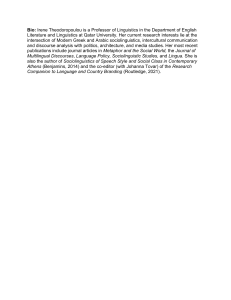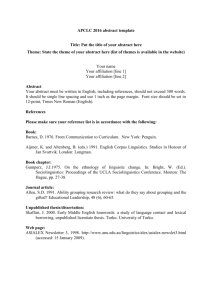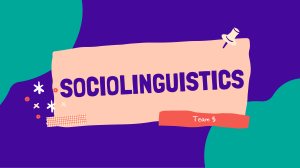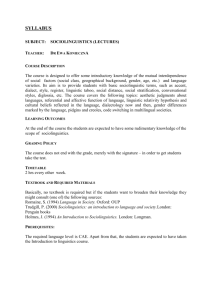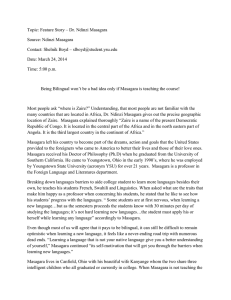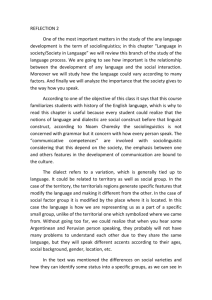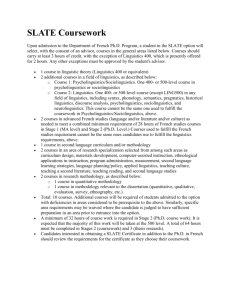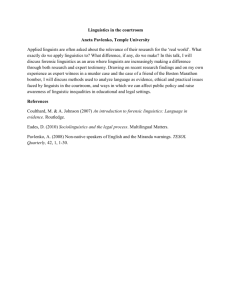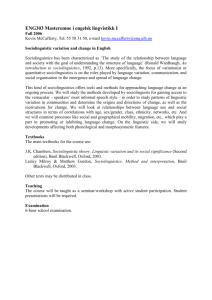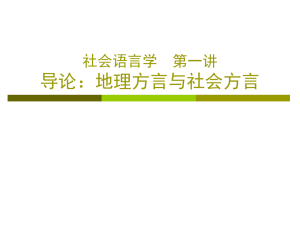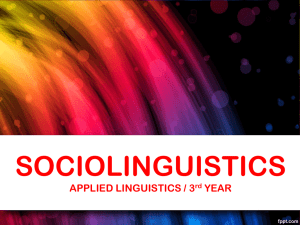LINGUISTICS 448 (SOCIOLINGUISTICS)
advertisement
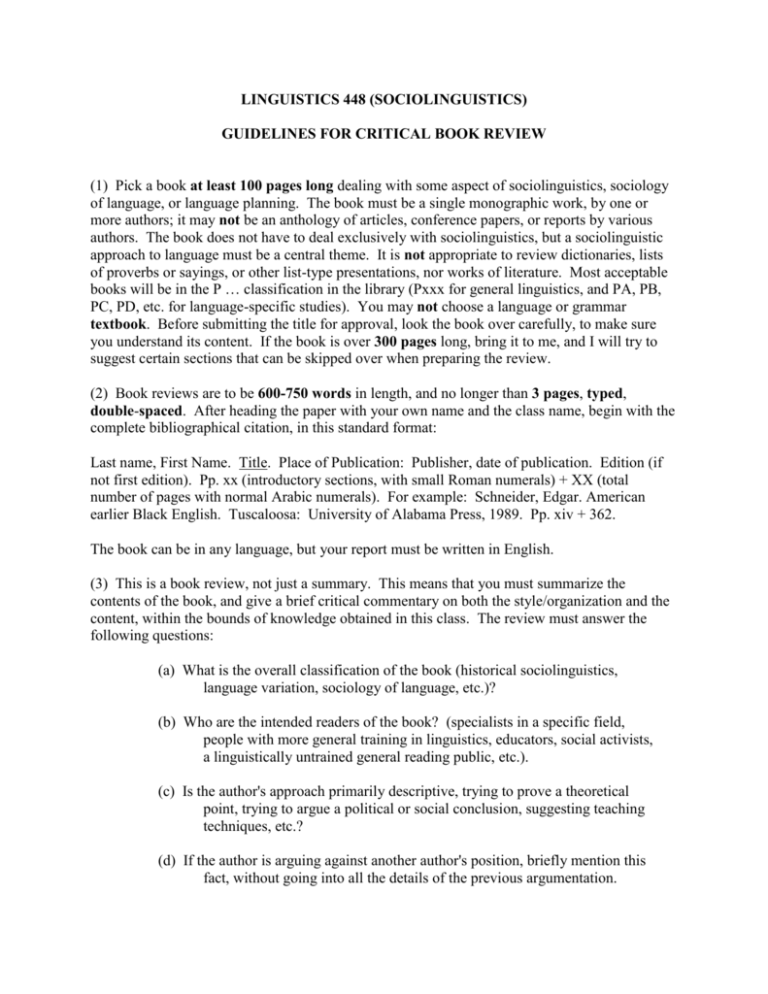
LINGUISTICS 448 (SOCIOLINGUISTICS) GUIDELINES FOR CRITICAL BOOK REVIEW (1) Pick a book at least 100 pages long dealing with some aspect of sociolinguistics, sociology of language, or language planning. The book must be a single monographic work, by one or more authors; it may not be an anthology of articles, conference papers, or reports by various authors. The book does not have to deal exclusively with sociolinguistics, but a sociolinguistic approach to language must be a central theme. It is not appropriate to review dictionaries, lists of proverbs or sayings, or other list-type presentations, nor works of literature. Most acceptable books will be in the P … classification in the library (Pxxx for general linguistics, and PA, PB, PC, PD, etc. for language-specific studies). You may not choose a language or grammar textbook. Before submitting the title for approval, look the book over carefully, to make sure you understand its content. If the book is over 300 pages long, bring it to me, and I will try to suggest certain sections that can be skipped over when preparing the review. (2) Book reviews are to be 600-750 words in length, and no longer than 3 pages, typed, double-spaced. After heading the paper with your own name and the class name, begin with the complete bibliographical citation, in this standard format: Last name, First Name. Title. Place of Publication: Publisher, date of publication. Edition (if not first edition). Pp. xx (introductory sections, with small Roman numerals) + XX (total number of pages with normal Arabic numerals). For example: Schneider, Edgar. American earlier Black English. Tuscaloosa: University of Alabama Press, 1989. Pp. xiv + 362. The book can be in any language, but your report must be written in English. (3) This is a book review, not just a summary. This means that you must summarize the contents of the book, and give a brief critical commentary on both the style/organization and the content, within the bounds of knowledge obtained in this class. The review must answer the following questions: (a) What is the overall classification of the book (historical sociolinguistics, language variation, sociology of language, etc.)? (b) Who are the intended readers of the book? (specialists in a specific field, people with more general training in linguistics, educators, social activists, a linguistically untrained general reading public, etc.). (c) Is the author's approach primarily descriptive, trying to prove a theoretical point, trying to argue a political or social conclusion, suggesting teaching techniques, etc.? (d) If the author is arguing against another author's position, briefly mention this fact, without going into all the details of the previous argumentation. (e) What are the author's principal conclusions? (f) How does the author support the conclusions? (by new data, by demolishing alternative arguments, by presenting a model demonstration or case study, by simply claiming to be an authority, by pointing out defects or otherwise maligning the work of other writers, etc.). (g) Is the book clearly written? Are assertions well-documented? Does the author make unsupported statements which reveal bias, preconceived notions, or ignorance? (h) In overall terms, how effective is the book in providing information to the intended audience? Can you highlight particularly effective or compelling sections, or suggest areas for improvement? (4) Write in objective, scientific style; this is a critical review, not a reaction paper. Do not use the first person anywhere in the review, nor include personal opinions or recommendations (e.g. “I think everyone should read this book,” “I learned a lot from this book,” etc.). For good examples of this type of review, see the “Book notices” section of the general linguistics journal Language or book reviews in other relevant journals, such as Language and Society, International Journal of the Sociology of Language, Language Variation and Change. (5) Do not turn in the book with your review. However, keep the book handy while I am grading the reviews, since I may ask to see the book in order to verify specific details. Your grade will be based on the content and quality of your review, and on your following all directions carefully. Name________________________________________ Correct bibliographical citation? (1 point) _____ Appropriate length? (1 point) _____ Classification? (2 points) _____ Intended audience? (1 point) _____ Approach? (2 points) _____ Conclusions? (3 points) _____ Justifications? (3 points) _____ Effectiveness? (2 points) _____ Overall assessment? (3 points) _____ Professional style/terminology (2 points) _____ Total (max. 20 points) _____ GRADE: _____
